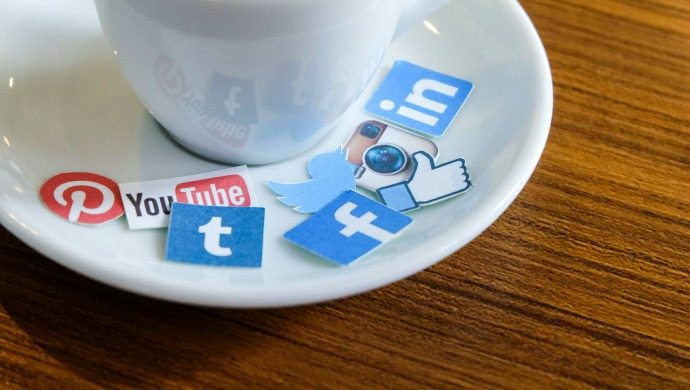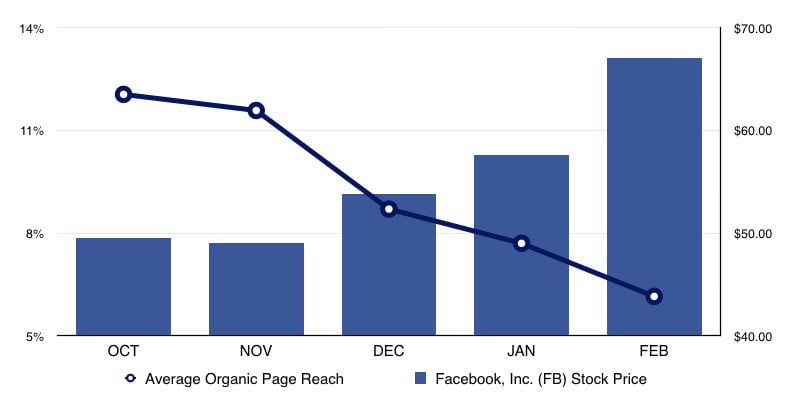A big myth of social media advertising is that it is useful only for awareness. That was true a few years ago when Facebook was just a new advertising platform with primitive features

With reducing organic reach on Facebook, brands are turning to paid ads.
As more and more brands jump on Facebook’s advertising platform, its commercial value increases.

Source: Convinceandconvert
Have you ever wondered why some advertisers managed to generate an ROI of 3,500 per cent while others just contribute to the bottom line of Facebook ?
Having worked with companies ranging from startups to MNCs in marketing, I have seen companies that spend a fortune only to leave with a hole in their pocket. They tend to exhibit common traits.
Here I list three of them.
Not having a clear objective
When the advertising campaign fail to produce any tangible results, advertisers tend to console themselves by pointing to an increase in brand awareness (which I have no idea how they measure).
Sounds familiar ?
Don’t get me wrong. Brand awareness is great. The Macdonalds and Apples of the world rise to the top by constantly bombarding us with their brand message.
For small players, it may not be the best use of budget.
Let’s not forget that a startup is a business, and a business is a profit-generating entity. Sure, coming up with a creative campaign is fun, but making money to sustain your business is critical.
Jay Abraham who is famous for his results-driven marketing approach in the 70s categorises ads into two genres: institutional ads and direct response ads.
Most ads carried out in the offline space are institutional ads, as Jay Abraham calls it. They are done primarily for raising brand awareness. Direct response ads, on the other hand, solicit an action from the audience immediately, be it to sign up for an account or to make a purchase. A dollar value can be then tagged to a particular piece of advert to gauge its performance.
In those days (1970s), direct response ads were broadcast using mostly mailers and/or newspaper. People who were interested in the offer had to write back to the advertiser, along with their cheque. And yes, they used a stamp. There was no Paypal, Gmail, Facebook or the likes (I know its hard to imagine it now). Yet, direct response advertisers were able to calculate the ROI of each advertising campaign, using manual means.
Can you even fathom that those direct mailer campaigns managed to generate millions in positive returns?
Fast forward to the Internet era, direct response advertising has been taken to the next level. Of course, there are new champions of this area. Kim Walsh Phillips, author of the bestselling book No B.S. guide to direct response social media marketing says that most marketing is a big fat waste of money. Dollars are thrown away every day in pursuit of ‘awareness’.
Misuse of Social Media
A big myth of social media advertising is that it is useful only for awareness. That was true a few years ago when Facebook was just a new advertising platform with primitive features.
Now, with integration of third-party data, advertisers can target precise audience. Importantly, Facebook has introduced pixels for you to track the business results of your campaign. Given that 41 per cent of people make their purchase online after research, it is no wonder Facebook is making direct response advertising easy for us advertisers.
With pixels, you can directly attribute the number of signups or sales volume to any ads campaign, even down to a single piece of ad. This allows you to find out the cost per lead or cost per acquisition, as well as the ROI of the campaign. From there, you can tweak elements of the ad to achieve best results.
The amount of data available for making decisions and optimising campaign is incredible, presenting wonderful opportunities for advertisers today. This is an advantage that the pioneering direct response advertisers didn’t get to enjoy. There was no way they can spend US$5 to ‘test things out’.
We really have no excuse not to make our campaign a profitable one.
Not speaking the right language
Probably due to a lack of understanding of direct response marketing principles, advertisers have a strong propensity to oversell themselves on social media.
They write ads as though they are liaising with investors or agencies. The idea of branding and corporate imaging never leave their heads.
I am not saying these things aren’t important. You have to be professional, but you also have to speak the language in social media.

In the ad below by yellowbox, I do not know how they are faring in terms of ROI, but they appeared in my Facebook newsfeed and I effectively just scrolled past them. I am guessing others did the same (I only went back to capture the screenshot for the purpose of this article). Can you see what’s the issue ? Just put yourselves in the shoes of a social media user for a moment.
On the other, Zalora adopts a conversational tone in his ad copy, as though a friend is calling me.

So what are the best practices ?
Jay Abraham advocates having a clean, editorial-looking ad written in audiences’ shoes.
Include facts within the article. Be as specific as possible and add in numbers where it makes sense, like what Zalora is doing. Instead of boasting that it is the best online store in Singapore & JB, they focus on the benefit for the user which is the 18 per cent discount. Note that you don’t necessarily need a discount to win in social media, instead touch on the USPs of your business in an objective manner. Always think in terms of what’s in it for the user, not your brand.
Consider using a swipe file to keep a record of all the good ads you come across in your own newsfeed. Trust me, it will come in very useful when you run your ads campaign.
Conclusion
If you were to invest money into social media advertising, you need to also take the time to figure out the platform to make it work. Each channel has its own nuances. Facebook, being the biggest social media network in Singapore, is surely a worthwhile investment for you. If you do it right, the rewards to your business will be immense.
You will have an automated and predictable way of generating customers on social media while your competitors struggle to get new ones. Just make sure you begin with the end in mind, make use of the features in social media, track relentlessly and speak the right language. And you are all set.
—
Ted is an advocate of content, marketer for SMEs and experimenter in digital marketing techniques. He blogs over at Ice Cube Marketing.
The views expressed here are of the author’s, and e27 may not necessarily subscribe to them. e27 invites members from Asia’s tech industry and startup community to share their honest opinions and expert knowledge with our readers. If you are interested in sharing your point of view, submit your article here.
Image Credit: 123rf.com
The post 3 main reasons why your social media ads failed (and how to fix them) appeared first on e27.